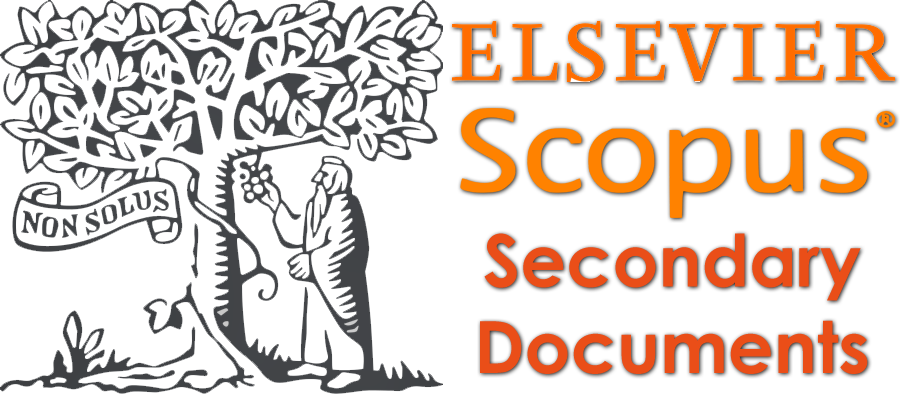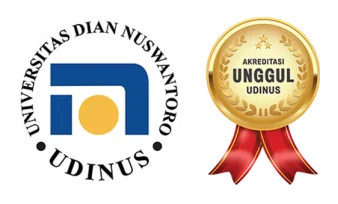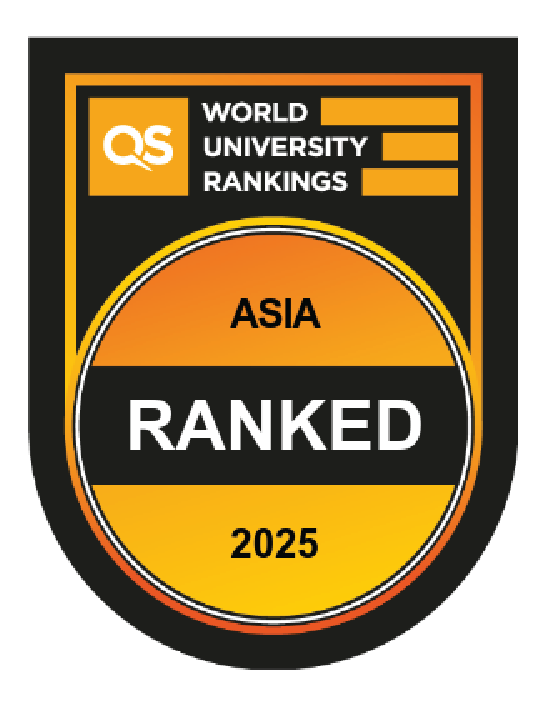CoSoGMIR: A Social Graph Contagion Diffusion Framework using the Movement-Interaction-Return Technique
DOI:
https://doi.org/10.33633/jcta.v1i2.9355Keywords:
COVID-19, SI-graph, pandemic propagation, diffusion models, small-world graphs, SIS, SIRAbstract
Besides the inherent benefits of exchanging information and interactions between nodes on a social graph, they can also become a means for the propagation of knowledge. Social graphs have also become a veritable structure for the spread of disease outbreaks. These and its set of protocols are deployed as measures to curb its widespread effects as it has also left network experts puzzled. The recent lessons from the COVID-19 pandemic continue to reiterate that diseases will always be around. Nodal exposure, adoption/diffusion of disease(s) among interacting nodes vis-a-vis migration of nodes that cause further spread of contagion (concerning COVID-19 and other epidemics) has continued to leave experts bewildered towards rejigging set protocols. We model COVID-19 as a Markovian process with node targeting, propagation and recovery using migration-interaction as a threshold feat on a social graph. The migration-interaction design seeks to provision the graph with minimization and block of targeted diffusion of the contagion using seedset(s) nodes with a susceptible-infect policy. The study results showed that migration and interaction of nodes via the mobility approach have become an imperative factor that must be added when modeling the propagation of contagion or epidemics.References
S. Laddha et al., “COVID-19 Diagnosis and Classification Using Radiological Imaging and Deep Learning Techniques : A Com-parative Study COVID-19,” MDPI Diagnostics, vol. 12, pp. 3–24, 2022, doi: 10.3390/diagnostics/12081880.
S. Peng et al., “Quantitative CT imaging features for COVID-19 evaluation: The ability to differentiate COVID-19 from non- COVID-19 (highly suspected) pneumonia patients during the epidemic period,” PLoS One, vol. 17, no. 1, p. e0256194, Jan. 2022, doi: 10.1371/journal.pone.0256194.
A. A. Ojugo and R. E. Yoro, “Migration Pattern As Threshold Parameter In The Propagation of The COVID-19 Epidemic Using An Actor-Based Model for SI-Social Graph,” JINAV J. Inf. Vis., vol. 2, no. 2, pp. 93–105, Mar. 2021, doi: 10.35877/454RI.jinav379.
M. F. Aslan, K. Sabanci, A. Durdu, and M. F. Unlersen, “COVID-19 diagnosis using state-of-the-art CNN architecture features and Bayesian Optimization,” Comput. Biol. Med., vol. 142, p. 105244, Mar. 2022, doi: 10.1016/j.compbiomed.2022.105244.
F. O. Aghware, R. E. Yoro, P. O. Ejeh, C. C. Odiakaose, F. U. Emordi, and A. A. Ojugo, “DeLClustE: Protecting Users from Credit-Card Fraud Transaction via the Deep-Learning Cluster Ensemble,” Int. J. Adv. Comput. Sci. Appl., vol. 14, no. 6, pp. 94–100, 2023, doi: 10.14569/IJACSA.2023.0140610.
D. O. Oyewola, E. G. Dada, N. J. Ngozi, A. U. Terang, and S. A. Akinwumi, “COVID-19 Risk Factors, Economic Factors, and Epidemiological Factors nexus on Economic Impact: Machine Learning and Structural Equation Modelling Approaches,” J. Niger. Soc. Phys. Sci., vol. 3, no. 4, pp. 395–405, 2021, doi: 10.46481/jnsps.2021.173.
A. S. Tarawneh, A. B. Hassanat, C. Celik, D. Chetverikov, M. S. Rahman, and C. Verma, “Deep Face Image Retrieval: a Comparative Study with Dictionary Learning,” in 2019 10th International Conference on Information and Communication Systems (ICICS), Jun. 2019, pp. 185–192. doi: 10.1109/IACS.2019.8809127.
F. Ucar and D. Korkmaz, “COVIDiagnosis-Net: Deep Bayes-SqueezeNet based diagnosis of the coronavirus disease 2019 (COVID-19) from X-ray images,” Med. Hypotheses, vol. 140, p. 109761, Jul. 2020, doi: 10.1016/j.mehy.2020.109761.
S. Lawton and S. Viriri, “Detection of COVID-19 from CT Lung Scans Using Transfer Learning,” Comput. Intell. Neurosci., vol. 2021, pp. 1–14, Apr. 2021, doi: 10.1155/2021/5527923.
A. A. Ojugo, M. I. Akazue, P. O. Ejeh, C. Odiakaose, and F. U. Emordi, “DeGATraMoNN : Deep Learning Memetic Ensemble to Detect Spam Threats via a Content-Based Processing,” Kongzhi yu Juece/Control Decis., vol. 38, no. 01, pp. 667–678, 2023.
A. A. Ojugo and O. D. Otakore, “Intelligent cluster connectionist recommender system using implicit graph friendship algorithm for social networks,” IAES Int. J. Artif. Intell., vol. 9, no. 3, p. 497~506, 2020, doi: 10.11591/ijai.v9.i3.pp497-506.
M. F. Aslan, M. F. Unlersen, K. Sabanci, and A. Durdu, “CNN-based transfer learning–BiLSTM network: A novel approach for COVID-19 infection detection,” Appl. Soft Comput., vol. 98, p. 106912, Jan. 2021, doi: 10.1016/j.asoc.2020.106912.
M. I. Akazue, A. A. Ojugo, R. E. Yoro, B. O. Malasowe, and O. Nwankwo, “Empirical evidence of phishing menace among un-dergraduate smartphone users in selected universities in Nigeria,” Indones. J. Electr. Eng. Comput. Sci., vol. 28, no. 3, pp. 1756–1765, Dec. 2022, doi: 10.11591/ijeecs.v28.i3.pp1756-1765.
A. S. Pillai, “Multi-Label Chest X-Ray Classification via Deep Learning,” J. Intell. Learn. Syst. Appl., vol. 14, pp. 43–56, 2022, doi: 10.4236/jilsa.2022.144004.
B. O. Malasowe, M. I. Akazue, E. A. Okpako, F. O. Aghware, A. A. Ojugo, and D. V. Ojie, “Adaptive Learner-CBT with Secured Fault-Tolerant and Resumption Capability for Nigerian Universities,” Int. J. Adv. Comput. Sci. Appl., vol. 14, no. 8, pp. 135–142, 2023, doi: 10.14569/IJACSA.2023.0140816.
D. A. Oyemade and A. A. Ojugo, “A Property Oriented Pandemic Surviving Trading Model,” Int. J. Adv. Trends Comput. Sci. Eng., vol. 9, no. 5, pp. 7397–7404, 2020, doi: 10.30534/ijatcse/2020/71952020.
W. Zhang, X. Yang, and Q. Song, “Construction of Traceability System for Maintenance of Quality and Safety of Beef,” Int. J. Smart Sens. Intell. Syst., vol. 8, no. 1, pp. 782–800, Jan. 2015, doi: 10.21307/ijssis-2017-783.
D. Soriano-Paños, G. Ghoshal, A. Arenas, and J. Gómez-Gardeñes, “Impact of temporal scales and recurrent mobility patterns on the unfolding of epidemics,” Sep. 2019, doi: 10.1088/1742-5468/ab6a04.
J. A. Macías, T. Granollers, and P. L. Andrérs, “New trends on human-computer interaction: Research, development, new tools and methods,” New Trends Human-Computer Interact. Res. Dev. New Tools Methods, no. May 2014, pp. 1–161, 2009, doi: 10.1007/978-1-84882-352-5.
R. Antia and M. E. Halloran, “Transition to endemicity: Understanding COVID-19,” Immunity, vol. 54, no. 10, pp. 2172–2176, Oct. 2021, doi: 10.1016/j.immuni.2021.09.019.
R. E. Yoro, F. O. Aghware, B. O. Malasowe, O. Nwankwo, and A. A. Ojugo, “Assessing contributor features to phishing suscepti-bility amongst students of petroleum resources varsity in Nigeria,” Int. J. Electr. Comput. Eng., vol. 13, no. 2, p. 1922, Apr. 2023, doi: 10.11591/ijece.v13i2.pp1922-1931.
R. E. Yoro, F. O. Aghware, M. I. Akazue, A. E. Ibor, and A. A. Ojugo, “Evidence of personality traits on phishing attack menace among selected university undergraduates in Nigerian,” Int. J. Electr. Comput. Eng., vol. 13, no. 2, p. 1943, Apr. 2023, doi: 10.11591/ijece.v13i2.pp1943-1953.
A. A. Ojugo, A. O. Eboka, R. E. Yoro, M. O. Yerokun, and F. N. Efozia, “Hybrid model for early diabetes diagnosis,” in 2015 Second International Conference on Mathematics and Computers in Sciences and in Industry (MCSI), 2015, pp. 55–65. doi: 10.1109/MCSI.2015.35.
S. Kamble, A. Gunasekaran, and H. Arha, “Understanding the Blockchain technology adoption in supply chains-Indian context,” Int. J. Prod. Res., vol. 57, no. 7, pp. 2009–2033, Apr. 2019, doi: 10.1080/00207543.2018.1518610.
M. Iyoboyi and L. Musa-Pedro, “Optimizing agricultural value chain in Nigeria through infrastructural development,” Agric. Econ. Res. Rev., vol. 33, no. 2, pp. 205–218, 2020, doi: 10.5958/0974-0279.2020.00032.4.
F. M. Brofman Epelbaum and M. Garcia Martinez, “The technological evolution of food traceability systems and their impact on firm sustainable performance: A RBV approach,” Int. J. Prod. Econ., vol. 150, pp. 215–224, Apr. 2014, doi: 10.1016/j.ijpe.2014.01.007.
A. Telenti et al., “After the pandemic : perspectives on the future trajectory of COVID-19,” Nature, vol. 596, no. May, pp. 495–504, 2021, doi: 10.1038/s41586-021-03792-w.
R. Amelia, G. Kadarisma, N. Fitriani, and Y. Ahmadi, “The effect of online mathematics learning on junior high school mathematic resilience during COVID-19 pandemic,” J. Phys. Conf. Ser., vol. 1657, no. 1, p. 012011, Oct. 2020, doi: 10.1088/1742-6596/1657/1/012011.
I. Ahmad et al., “Yield Forecasting of Spring Maize Using Remote Sensing and Crop Modeling in Faisalabad-Punjab Pakistan,” J. Indian Soc. Remote Sens., vol. 46, no. 10, pp. 1701–1711, Oct. 2018, doi: 10.1007/s12524-018-0825-8.
H. W. Ahmad, S. Zilles, H. J. Hamilton, and R. Dosselmann, “Prediction of retail prices of products using local competitors,” Int. J. Bus. Intell. Data Min., vol. 11, no. 1, pp. 19–30, 2016, doi: 10.1504/IJBIDM.2016.076418.
J. M. Wood, “The 2009 influenza pandemic begins,” Influenza Other Respi. Viruses, vol. 3, no. 2, pp. 197–198, 2009, doi: 10.1111/j.1750-2659.2009.00099.x.
I. A. Anderson and W. Wood, “Habits and the electronic herd: The psychology behind social media’s successes and failures,” Consum. Psychol. Rev., vol. 4, no. 1, pp. 83–99, Jan. 2021, doi: 10.1002/arcp.1063.
P. M, “A Study on Consumer Perception Towards Digital Payment,” East Asian J. Multidiscip. Res., vol. 1, no. 6, pp. 1033–1044, Jul. 2022, doi: 10.55927/eajmr.v1i6.688.
N. M. Jahromi, S. A. Darabi, and M. Bahremand, “Study of Relationship Between Behavioural Characteristics and Demographic of Customers and Their Expected Advantages in Smart Cellphone Market,” Int. J. Manag. Stud. ISSN, vol. 2, no. 1, pp. 48–59, 2015, [Online]. Available: http://www.researchersworld.com/ijms/
A. Bahl et al., “Recursive feature elimination in random forest classification supports nanomaterial grouping,” NanoImpact, vol. 15, p. 100179, Mar. 2019, doi: 10.1016/j.impact.2019.100179.
F. Balducci, D. Impedovo, and G. Pirlo, “Machine Learning Applications on Agricultural Datasets for Smart Farm Enhancement,” Machines, vol. 6, no. 3, p. 38, Sep. 2018, doi: 10.3390/machines6030038.
L. A. Belanche and F. F. González, “Review and Evaluation of Feature Selection Algorithms in Synthetic Problems,” Inf. Fusion, vol. 23, pp. 34–54, Jan. 2011.
A. R. Bodie, A. C. Micciche, G. G. Atungulu, M. J. Rothrock, and S. C. Ricke, “Current Trends of Rice Milling Byproducts for Agricultural Applications and Alternative Food Production Systems,” Front. Sustain. Food Syst., vol. 3, Jun. 2019, doi: 10.3389/fsufs.2019.00047.
M. W. Macy and R. Willer, “From Factors to Actors: Computational Sociology and Agent-Based Modeling,” Annu. Rev. Sociol., vol. 28, no. 1, pp. 143–166, Aug. 2002, doi: 10.1146/annurev.soc.28.110601.141117.
M. I. Akazue, R. E. Yoro, B. O. Malasowe, O. Nwankwo, and A. A. Ojugo, “Improved services traceability and management of a food value chain using block-chain network : a case of Nigeria,” Indones. J. Electr. Eng. Comput. Sci., vol. 29, no. 3, pp. 1623–1633, 2023, doi: 10.11591/ijeecs.v29.i3.pp1623-1633.
J. Camargo and A. Young, “Feature Selection and Non-Linear Classifiers: Effects on Simultaneous Motion Recognition in Upper Limb,” IEEE Trans. Neural Syst. Rehabil. Eng., vol. 27, no. 4, pp. 743–750, Apr. 2019, doi: 10.1109/TNSRE.2019.2903986.
S. Chouhan, D. Singh, and A. Singh, “An Improved Feature Selection and Classification using Decision Tree for Crop Datasets,” Int. J. Comput. Appl., vol. 142, no. 13, pp. 5–8, May 2016, doi: 10.5120/ijca2016909966.
S. Gokarn and A. Choudhary, “Modeling the key factors influencing the reduction of food loss and waste in fresh produce supply chains,” J. Environ. Manage., vol. 294, p. 113063, Sep. 2021, doi: 10.1016/j.jenvman.2021.113063.
P. Filippi et al., “An approach to forecast grain crop yield using multi-layered, multi-farm data sets and machine learning,” Precis. Agric., vol. 20, no. 5, pp. 1015–1029, Oct. 2019, doi: 10.1007/s11119-018-09628-4.
Y. Bruinen de Bruin et al., “Initial impacts of global risk mitigation measures taken during the combatting of the COVID-19 pan-demic,” Saf. Sci., vol. 128, no. April, p. 104773, 2020, doi: 10.1016/j.ssci.2020.104773.
S. M. Kissler, C. Tedijanto, E. M. Goldstein, Y. H. Grad, and M. Lipsitch, “Projecting the transmission dynamics of SARS-CoV-2 through the post-pandemic period,” Biol. Cell, vol. 35, pp. 1–30, 2020, doi: 10.1101/2020.03.04.20031112.
A. Goldstein, L. Fink, A. Meitin, S. Bohadana, O. Lutenberg, and G. Ravid, “Applying machine learning on sensor data for irrigation recommendations: revealing the agronomist’s tacit knowledge,” Precis. Agric., vol. 19, no. 3, pp. 421–444, Jun. 2018, doi: 10.1007/s11119-017-9527-4.
S. Iniyan, R. Jebakumar, P. Mangalraj, M. Mohit, and A. Nanda, “Plant Disease Identification and Detection Using Support Vector Machines and Artificial Neural Networks,” 2020, pp. 15–27. doi: 10.1007/978-981-15-0199-9_2.
Y. Kang, M. Ozdogan, X. Zhu, Z. Ye, C. Hain, and M. Anderson, “Comparative assessment of environmental variables and machine learning algorithms for maize yield prediction in the US Midwest,” Environ. Res. Lett., vol. 15, no. 6, p. 064005, Jun. 2020, doi: 10.1088/1748-9326/ab7df9.
Z. Karimi, M. Mansour Riahi Kashani, and A. Harounabadi, “Feature Ranking in Intrusion Detection Dataset using Combination of Filtering Methods,” Int. J. Comput. Appl., vol. 78, no. 4, pp. 21–27, Sep. 2013, doi: 10.5120/13478-1164.
S. Mahmad, Jebakumar, and S. Iniyan, “Iot based hybrid plant disease detection for yields enhancement,” Eur. J. Mol. Clin. Med., vol. 7, no. 8, pp. 2134–2153, 2020, [Online]. Available: https://www.scopus.com/inward/record.uri?partnerID=HzOxMe3b&scp=85098511002&origin=inward
W. W. Guo and H. Xue, “Crop Yield Forecasting Using Artificial Neural Networks: A Comparison between Spatial and Temporal Models,” Math. Probl. Eng., vol. 20, no. 4, pp. 1–7, 2014, doi: 10.1155/2014/857865.
A. A. Ojugo and D. A. Oyemade, “Predicting Diffusion Dynamics Of The Coronavirus In Nigeria Through Ties-Strength Threshold On A Cascading SI-Graph,” Technol. Reports Kansai Univ., vol. 62, no. 08, pp. 126–132, 2020, doi: TRKU-13-08-2020-10998.
K. Kakhi, R. Alizadehsani, H. M. D. Kabir, A. Khosravi, S. Nahavandi, and U. R. Acharya, “The internet of medical things and artificial intelligence: trends, challenges, and opportunities,” Biocybern. Biomed. Eng., vol. 42, no. 3, pp. 749–771, 2022, doi: 10.1016/j.bbe.2022.05.008.
H. Said, B. B. S. Tawfik, and M. A. Makhlouf, “A Deep Learning Approach for Sentiment Classification of COVID-19 Vaccination Tweets,” Int. J. Adv. Comput. Sci. Appl., vol. 14, no. 4, pp. 530–538, 2023, doi: 10.14569/IJACSA.2023.0140458.
Q. Li et al., “An Enhanced Grey Wolf Optimization Based Feature Selection Wrapped Kernel Extreme Learning Machine for Medical Diagnosis,” Comput. Math. Methods Med., vol. 2017, pp. 1–15, 2017, doi: 10.1155/2017/9512741.
Y. Hu, J. Sun, Q. Zhang, and Y. Han, “Current Status and Future Development Proposal for Chinese Agricultural Product Quality and Safety Traceability,” Chinese J. Eng. Sci., vol. 20, no. 2, p. 57, 2018, doi: 10.15302/J-SSCAE-2018.02.009.
D. A. Oyemade and A. A. Ojugo, “An Optimized Input Genetic Algorithm Model for the Financial Market,” Int. J. Innov. Sci. Eng. Technol., vol. 8, no. 2, pp. 408–419, 2021, [Online]. Available: https://ijiset.com/vol8/v8s2/IJISET_V8_I02_41.pdf
A. E. Ibor, E. B. Edim, and A. A. Ojugo, “Secure Health Information System with Blockchain Technology,” J. Niger. Soc. Phys. Sci., vol. 5, no. 992, pp. 1–8, 2023, doi: 10.46481/jnsps.2022.992.
P. M. Granitto, C. Furlanello, F. Biasioli, and F. Gasperi, “Recursive feature elimination with random forest for PTR-MS analysis of agroindustrial products,” Chemom. Intell. Lab. Syst., vol. 83, no. 2, pp. 83–90, Sep. 2006, doi: 10.1016/j.chemolab.2006.01.007.
S. Khaki, L. Wang, and S. V. Archontoulis, “A CNN-RNN Framework for Crop Yield Prediction,” Front. Plant Sci., vol. 10, Jan. 2020, doi: 10.3389/fpls.2019.01750.
S. Khaki and L. Wang, “Crop Yield Prediction Using Deep Neural Networks,” Front. Plant Sci., vol. 10, May 2019, doi: 10.3389/fpls.2019.00621.
A. A. Ojugo and A. O. Eboka, “Empirical Bayesian network to improve service delivery and performance dependability on a campus network,” IAES Int. J. Artif. Intell., vol. 10, no. 3, p. 623, Sep. 2021, doi: 10.11591/ijai.v10.i3.pp623-635.
A. Taravat and F. Del Frate, “Weibull Multiplicative Model and Machine Learning Models for Full-Automatic Dark-Spot Detection From Sar Images,” Int. Arch. Photogramm. Remote Sens. Spat. Inf. Sci., vol. XL-1/W3, no. September 2013, pp. 421–424, 2013, doi: 10.5194/isprsarchives-xl-1-w3-421-2013.
P. . Maya Gopal and Bhargavi R, “Feature Selection for Yield Prediction Using BORUTA Algorithm,” Int. J. Pure Appl. Math., vol. 118, no. 22, pp. 139–144, 2018.
Maya Gopal P S and Bhargavi R, “Selection of Important Features for Optimizing Crop Yield Prediction,” Int. J. Agric. Environ. Inf. Syst., vol. 10, no. 3, pp. 54–71, Jul. 2019, doi: 10.4018/IJAEIS.2019070104.
P. K. Kosamkar and V. Y. Kulkarni, “Agriculture crop simulation models using computational intelligence,” Int. J. Comput. Eng. Technol., vol. 10, no. 3, pp. 3–19, May 2019, doi: 10.34218/IJCET.10.3.2019.015.
L. Kouadio, R. C. Deo, V. Byrareddy, J. F. Adamowski, S. Mushtaq, and V. Phuong Nguyen, “Artificial intelligence approach for the prediction of Robusta coffee yield using soil fertility properties,” Comput. Electron. Agric., vol. 155, pp. 324–338, Dec. 2018, doi: 10.1016/j.compag.2018.10.014.
O. Olaewe, S. O. Akinoso, and A. S. Achanso, “Electronic Library and Other Internet Resources in Universities as Allied Forces in Global Research Work and Intellectual Emancipation Senior Lecturer and Senior Research Fellow Department of Science and Technology Education Dean , Faculty of Education Co,” J. Emerg. Trends Educ. Res. Policy Stud., vol. 10, no. 1, pp. 41–46, 2019.
J. Segarra, M. L. Buchaillot, J. L. Araus, and S. C. Kefauver, “Remote Sensing for Precision Agriculture: Sentinel-2 Improved Fea-tures and Applications,” Agronomy, vol. 10, no. 5, p. 641, May 2020, doi: 10.3390/agronomy10050641.
F. Shirbani and H. Soltanian Zadeh, “Fast SFFS-Based Algorithm for Feature Selection in Biomedical Datasets,” Amirkabir Int. J. Sci. Res., vol. 45, no. 2, pp. 43–56, 2013, [Online]. Available: https://eej.aut.ac.ir/article_434_6d0cf5e07bb414dc6eec6c82785c0149.pdf
R. Nasir, M. Afzal, R. Latif, and W. Iqbal, “Behavioral Based Insider Threat Detection Using Deep Learning,” IEEE Access, vol. 9, pp. 143266–143274, 2021, doi: 10.1109/ACCESS.2021.3118297.
S. A. Hosseini, H. A. Abyaneh, S. H. H. Sadeghi, F. Razavi, and A. Nasiri, “An overview of microgrid protection methods and the factors involved,” Renew. Sustain. Energy Rev., vol. 64, pp. 174–186, Oct. 2016, doi: 10.1016/j.rser.2016.05.089.
M. Fatima and M. Pasha, “Survey of Machine Learning Algorithms for Disease Diagnostic,” J. Intell. Learn. Syst. Appl., vol. 09, no. 01, pp. 1–16, 2017, doi: 10.4236/jilsa.2017.91001.
R. H. Khan, “Deep Learning Based Medical X-ray Image Recognition and Classification,” BRAC University, 2018.
S. Khanam, I. Bin Ahmedy, M. Y. Idna Idris, M. H. Jaward, and A. Q. Bin Md Sabri, “A Survey of Security Challenges, Attacks Taxonomy and Advanced Countermeasures in the Internet of Things,” IEEE Access, vol. 8, pp. 219709–219743, 2020, doi: 10.1109/ACCESS.2020.3037359.
S. Og and L. Ying, “The Internet of Medical Things,” ICMLCA 2021 - 2nd Int. Conf. Mach. Learn. Comput. Appl., pp. 273–276, 2021.
S. Zhang, W. Huang, and H. Wang, “Crop disease monitoring and recognizing system by soft computing and image processing models,” Multimed. Tools Appl., vol. 79, no. 41–42, pp. 30905–30916, Nov. 2020, doi: 10.1007/s11042-020-09577-z.
J. A. Al-Tawfiq, D. T. Chu, V. T. Hoang, and Z. A. Memish, “From Pandemicity to Endemicity: The Journey of SARS-CoV-2,” J. Epidemiol. Glob. Health, vol. 12, no. 2, pp. 147–149, 2022, doi: 10.1007/s44197-022-00046-4.
A. Mohd Ibrahim, I. Venkat, P. De Wilde, M. R. Mohd Romlay, and A. Bahamid, “The role of crowd behavior and cooperation strategies during evacuation,” Simulation, vol. 98, no. 9, pp. 737–751, Sep. 2022, doi: 10.1177/00375497221075611.
A. A. Ojugo and D. A. Oyemade, “Boyer moore string-match framework for a hybrid short message service spam filtering tech-nique,” IAES Int. J. Artif. Intell., vol. 10, no. 3, pp. 519–527, 2021, doi: 10.11591/ijai.v10.i3.pp519-527.
A. O. Eboka and A. A. Ojugo, “Mitigating technical challenges via redesigning campus network for greater efficiency, scalability and robustness: a logical view,” Int. J. Mod. Educ. Comput. Sci., vol. 12, no. 6, pp. 29–45, 2020, doi: 10.5815/ijmecs.2020.06.03.
S. Kissler, “Revealing contagion,” Science (80-. )., vol. 378, no. 6620, pp. 611–611, Nov. 2022, doi: 10.1126/science.ade3133.
H. Jung, M. Park, K. Hong, and E. Hyun, “The Impact of an Epidemic Outbreak on Consumer Expenditures:An Empirical As-sessment for MERS Korea,” Sustainability, vol. 8, no. 5, p. 454, May 2016, doi: 10.3390/su8050454.
A. A. Ojugo and A. O. Eboka, “Modeling Behavioural Evolution as Social Predictor for the Coronavirus Contagion and Immun-ization in Nigeria,” J. Appl. Sci. Eng. Technol. Educ., vol. 3, no. 2, pp. 135–144, Dec. 2021, doi: 10.35877/454RI.asci130.
A. A. Ojugo and O. Nwankwo, “Modeling Mobility Pattern for the Corona-Virus Epidemic Spread Propagation and Death Rate in Nigeria using the Movement-Interaction-Return Model,” Int. J. Emerg. Trends Eng. Res., vol. 9, no. 6, pp. 821–826, Jun. 2021, doi: 10.30534/ijeter/2021/30962021.
R. Toivonen, L. Kovanen, M. Kivelä, J.-P. Onnela, J. Saramäki, and K. Kaski, “A comparative study of social network models: Network evolution models and nodal attribute models,” Soc. Networks, vol. 31, no. 4, pp. 240–254, Oct. 2009, doi: 10.1016/j.socnet.2009.06.004.
A. A. Ojugo and O. Nwankwo, “Multi-Agent Bayesian Framework For Parametric Selection In The Detection And Diagnosis of Tuberculosis Contagion In Nigeria,” JINAV J. Inf. Vis., vol. 2, no. 2, pp. 69–76, Mar. 2021, doi: 10.35877/454RI.jinav375.
Downloads
Published
How to Cite
Issue
Section
License
Copyright (c) 2023 Arnold Adimabua Ojugo; Patrick Ogholuwarami Ejeh; Maureen Ifeanyi Akazue; Nwanze Chukwudi Ashioba; Christopher Chukwufunaya Odiakaose; Rita Erhovwo Ako; Blessing Nwozor; Frances Uche Emordi

This work is licensed under a Creative Commons Attribution 4.0 International License.















